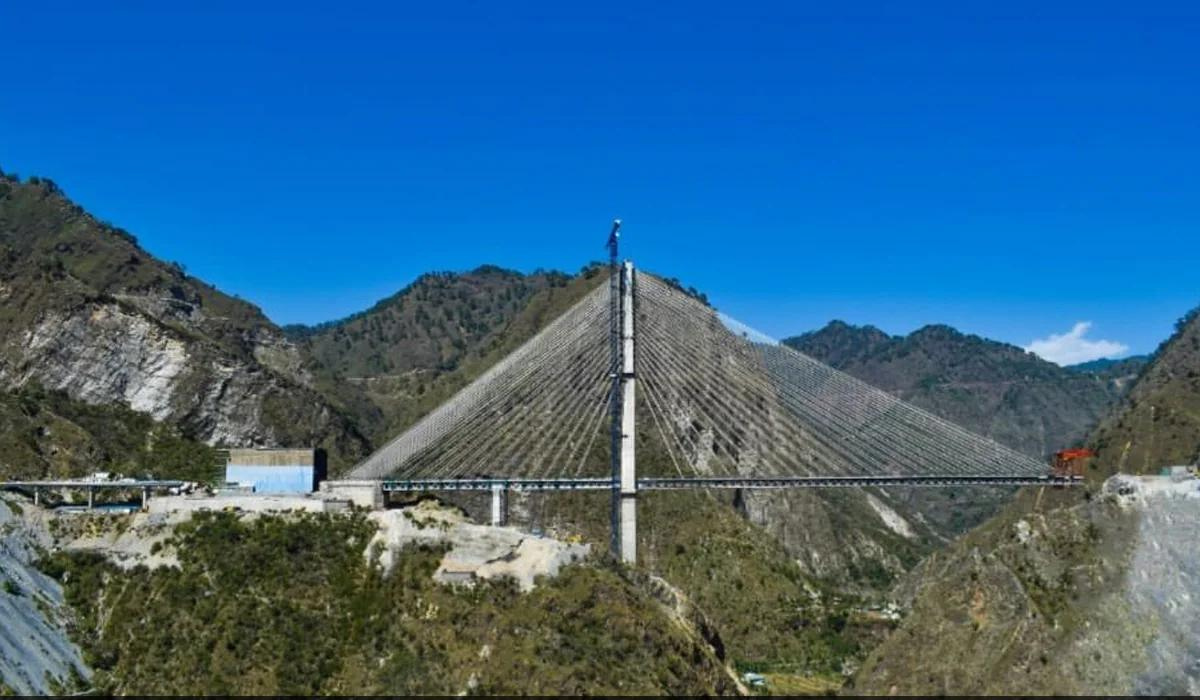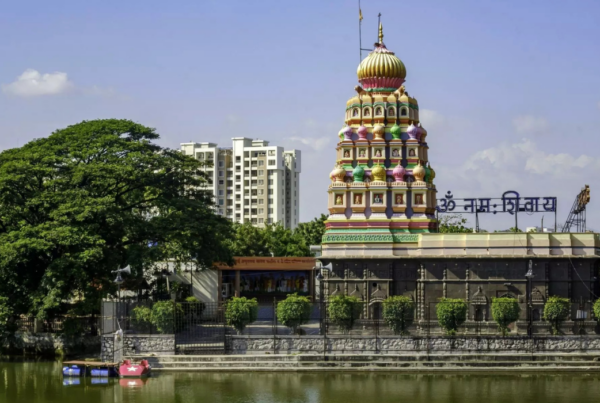Introduction:
Completing India’s First Cable-Stayed Rail Bridge, the Anji Khad Bridge is a significant milestone in the Udhampur-Srinagar-Baramulla Rail Link (USBRL) Project. The Indian Railways built the bridge in the Reasi district of the Union territory of Jammu and Kashmir, known for complex geological features and seismic activity. Situated in the Himalayas, the bridge spans a total length of 473.25 meters, featuring a main span of 290 meters and utilizing the cable-stayed bridge design with a single central tower. The bridge’s construction is a testament to the expertise and dedication of the engineers and workers involved, positioning it as a prominent national landmark.
The Bridge Design:
The cable-stayed Anji Khad Bridge utilizes a design with a main span of 290 meters, spanning a total length of 473.25 meters. The tower is 331 meters high, with a single central building of 193 meters from the foundation top. The bridge has an asymmetrical design balanced on the axis of a central tower. The bridge’s deck is 15 meters wide and has 96 cables, varying in length from 82 to 295 meters. The major pylon construction used micro piles of 40-meter depth around the circumference of the 20-meter hybrid healthy foundation.
Construction Challenges:
The bridge is located in a region with complex geological features and seismic proneness. IIT Roorkee and IIT Delhi carried out detailed site-specific investigations to overcome these challenges. Hybrid foundation stabilized slopes of mountain supporting main span foundation on Katra end due to space constraints. Central bridge works, including the main tower, 40m hybrid foundation, embankment, and viaduct, completed at Srinagar end.
Innovative Techniques and Equipment:
Efficient techniques and equipment saved 30% construction time and improved safety during Anji Khad Bridge’s construction. They used tower cranes with an extendable height of up to 205 meters to enhance construction activities at 193 meters. In addition, pump Concreting Systems and DOKA Jump-Form Shuttering were also used to increase efficiency.
Monitoring and Maintenance:
Due to the bridge’s importance, many sensors have been placed on it to monitor the bridge’s structural health during service. The Anji Khad Bridge has an integrated monitoring system through numerous sensors installed at various locations on the bridge. This system will help in the timely maintenance of the bridge and ensure its safety and longevity.
Conclusion:
The completion of India’s first cable-stayed rail bridge, the Anji Khad Bridge, is a landmark achievement and a significant step forward for the Udhampur-Srinagar-Baramulla Rail Link Project. This challenging bridge construction is a testament to the engineers’ and workers’ expertise and dedication. The innovative techniques and equipment used in construction will set a new benchmark for the Indian Railways. With its state-of-the-art monitoring system and design, the Anji Khad Bridge will provide a safe and reliable transportation infrastructure for years.








